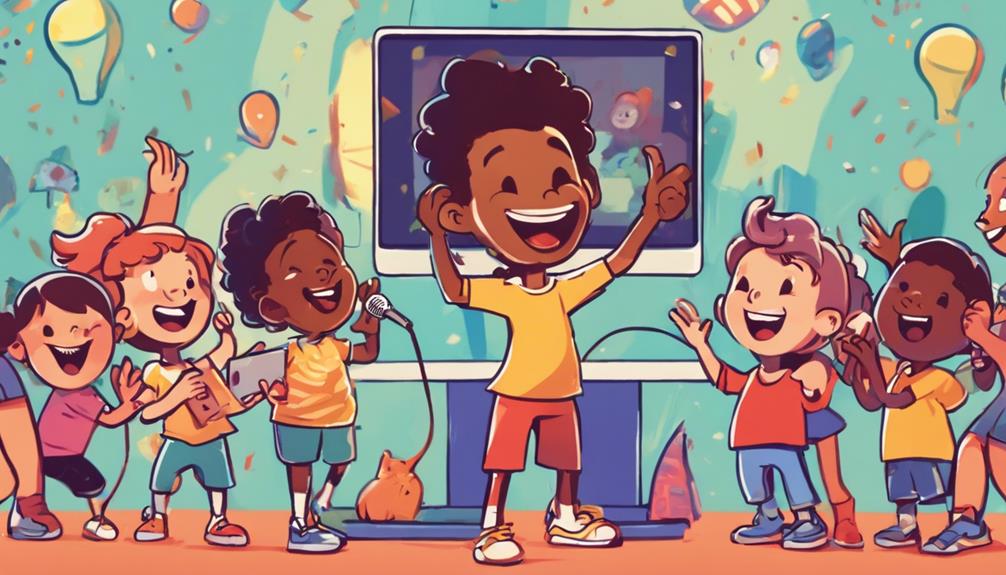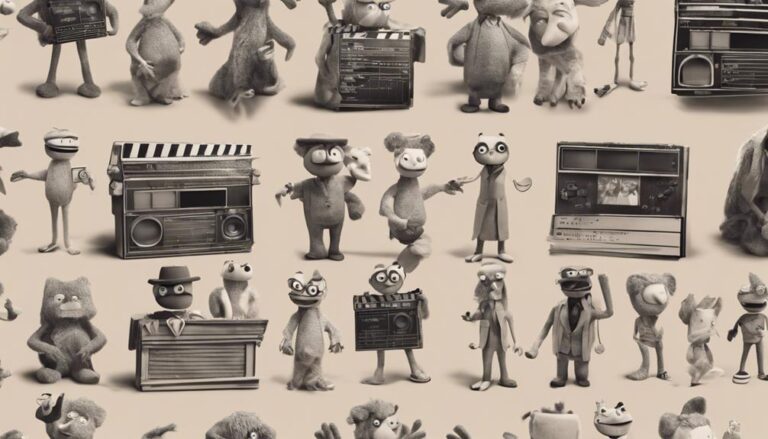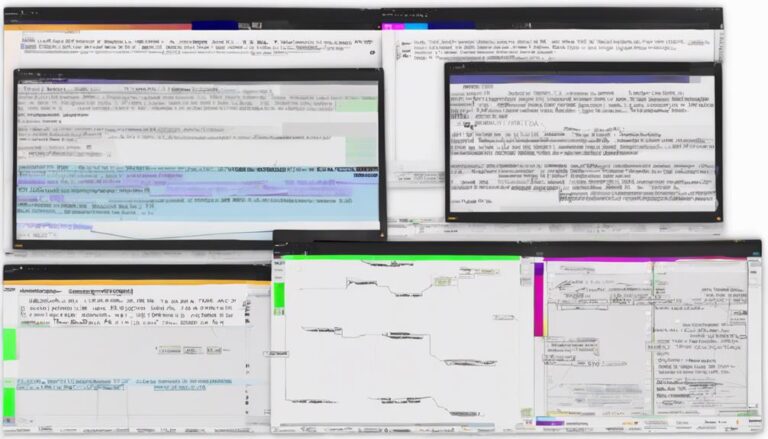What Makes a Great Animation Voice for Kids?
To create an engaging animation for kids, you'll need a voice that resonates with young audiences and brings characters to life. That starts with understanding your target audience, including what they enjoy and what they relate to. Effective animation voices have unique traits, like quirky accents or speech patterns, and authentic emotional expressions, such as honest laughter or heartfelt sorrow. A versatile vocal range, expressive tone, and varied pitch, volume, and resonance also help create a rich and nuanced sound. By mastering these elements, you can craft an animation voice that captivates young audiences and leaves a lasting impression on young minds, leading to a more immersive viewing experience.
Key Takeaways
- Developing unique character traits creates an engaging animation voice for kids.
- Vocal authenticity makes the character feel genuine and true to their personality.
- Expressive vocal range conveys a wide range of emotions and traits through the voice.
- Honest emotional portrayal makes characters relatable and authentic to young audiences.
- Seasoned voice actors with formal vocal training can deliver high-quality performances.
Understanding the Target Audience
Preschoolers tend to enjoy simple, colorful animation with catchy music and relatable characters.
Younger kids often prefer shows with humor, adventure, and social lessons.
Older kids, on the other hand, may enjoy more complex storylines, character development, and fantasy elements. Understanding these kid demographics is crucial in creating engaging content that resonates with your target audience.
To effectively cater to your target audience, research their viewing habits, interests, and preferences.
Analyze popular kids' shows and identify common themes, tone, and style. This information will help you develop a voice that appeals to your target audience and makes your animation stand out in a crowded market.
Unique Character Traits
Developing unique character traits is essential to creating an engaging animation voice for kids. When you're casting voice actors or creating characters, you want to bring distinct personalities to life.
This can be achieved through quirky accents, dialects, or speech patterns that set your characters apart. Fresh personalities are also crucial in making your animation more relatable and enjoyable for your young audience.
Consider what makes your character tick. Are they optimistic, sarcastic, or goofy? What motivates them? What're their strengths and weaknesses?
Answering these questions will help you develop a well-rounded character that kids can root for or laugh at. Unique character traits also provide opportunities for comedic relief, emotional depth, and character growth.
Bringing Characters to Life
To achieve this, focus on developing vocal authenticity.
This means creating a voice that sounds genuine and true to the character's personality.
Consider their background, experiences, and relationships – all of these factors can influence the way they speak.
For example, a character who's shy and introverted may speak more softly and hesitantly, while a confident and outgoing character may speak more loudly and assertively.
Voice and Tone Variations
When creating a great animation voice for kids, you'll need to master the nuances of expressive vocal range, which allows you to convey a wide range of emotions and traits through your voice.
To bring comedic scenes to life, you must also understand comedic timing, using pauses, inflections, and delivery to maximize humor and engagement.
Expressive Vocal Range
An expressive vocal range is a critical aspect of great animation voice acting for kids, as it enables you to convey a wide array of emotions and bring characters to life.
When you possess vocal agility, you can move seamlessly between different emotional states, making your character's experiences feel authentic and relatable to young audiences.
To develop an expressive vocal range, focus on exploring the full spectrum of tone dynamics.
This involves varying the pitch, volume, and resonance of your voice to create a rich, nuanced sound.
By mastering tone dynamics, you can convey subtle emotional shifts and add depth to your character's personality.
For example, a slight raise in pitch can suggest excitement or curiosity, while a lower, softer tone can convey empathy or concern.
When recording, experiment with different vocal ranges to discover the unique characteristics of your character's voice.
Pay attention to how your voice responds to different emotional scenarios, and make adjustments to create a consistent, engaging sound.
By honing your expressive vocal range, you'll be able to bring your animated characters to life and captivate young audiences with authenticity and emotional depth.
This skill will help you create memorable performances that resonate with kids.
Comedic Timing Matters
Possessing an expressive vocal range is just the starting point for great animation voice acting for kids.
What sets exceptional voice actors apart is their ability to deliver comedic timing that leaves young audiences in stitches. You see, comedic timing isn't just about being funny; it's about mastering the nuances of pacing, tone, and accent to create a hilarious and engaging experience.
To achieve comedic timing, you need to consider the pacing nuances of your dialogue delivery.
This means knowing when to speed up or slow down your speech, and how to use pauses for comedic effect. Funny accents can also add to the humor, as long as they're used authentically and consistently. A well-executed accent can become a character's defining trait, making them more relatable and entertaining.
When it comes to comedic timing, practice is key.
You need to experiment with different pacing and tone variations to find what works best for your character. By mastering comedic timing, you can elevate your animation voice acting skills and create memorable characters that kids will love.
Emotive Tone Control
While comedic timing is crucial for engaging young audiences, you also need to develop emotive tone control to create a well-rounded character.
This involves mastering voice and tone variations to convey emotional authenticity. When done correctly, it allows your character to connect with kids on a deeper level, making the story more relatable and memorable.
To achieve emotive tone control, consider the following techniques:
- Subtlety: Use subtle tone shifts to convey complex emotions, such as a slight quiver in your voice to express vulnerability or a gentle lilt to convey kindness.
- Range: Develop a wide range of tonal expressions to bring your character to life, from soft and soothing to loud and boisterous.
- Consistency: Establish a consistent tone for your character and adapt it to suit different situations, ensuring that their emotional responses feel authentic and believable.
Captivating Young Audiences
Captivating young audiences with animated films requires a deep understanding of child development and psychology. To create engaging content, you should consider the cognitive and emotional needs of your young viewers. Effective kid engagement involves more than just flashy visuals; it requires a thoughtful approach to storytelling and audience participation.
| Kid Engagement Strategies | Benefits |
|---|---|
| Interactive storytelling | Encourages audience participation |
| Relatable characters | Fosters emotional connection |
| Variable pacing | Maintains kid attention span |
| Rhymes and songs | Enhances memory retention |
| Repetition | Develops learning habits |
When developing content for young audiences, you should prioritize kid engagement and audience participation. By incorporating interactive elements and relatable characters, you can create a captivating experience that keeps kids engaged and invested in the story. By understanding the cognitive and emotional needs of your viewers, you can design content that not only entertains but also educates and inspires. This thoughtful approach will help you create animated films that resonate with young audiences and leave a lasting impression.
Emotional Expression and Depth
When creating a great animation voice for kids, you're not just casting a voice – you're bringing characters to life with nuanced emotional expression.
Honest emotional portrayal is key to making your characters relatable and authentic, allowing young audiences to form meaningful connections with them.
Bringing Characters to Life
As voice actors breathe life into animated characters, their ability to convey emotional expression and depth becomes a crucial aspect of a child's viewing experience.
You want the characters to feel authentic, relatable, and engaging. This is where the voice actor's skill in bringing characters to life comes into play.
A great animation voice for kids must be able to capture the subtleties of character nuances, making each character unique and believable.
This can be achieved through vocal authenticity, where the voice actor's performance feels genuine and true to the character's personality.
To effectively bring characters to life, consider the following key elements:
- Consistency: Consistent vocal tone, pace, and volume help establish the character's personality and traits.
- Emotional range: The ability to convey a wide range of emotions, from subtle to extreme, adds depth and nuance to the character.
- Subtlety: Subtle variations in tone, pitch, and volume can convey complex emotions and character traits, making the character feel more real.
Honest Emotional Portrayal
To achieve honest emotional portrayal, consider the following key elements:
| Emotional Expression | Characteristics |
|---|---|
| Joy | Unbridled enthusiasm, genuine laughter |
| Sadness | Sincere tears, heartfelt sorrow |
| Anger | Frustration, exasperation, but not aggression |
| Fear | Apprehension, uncertainty, vulnerability |
| Love | Kindness, compassion, warmth |
When you infuse your character's voice with genuine sincerity, kids pick up on it. It's essential to be true to the character's emotions, even when it's uncomfortable or difficult. By doing so, you create a character that kids can trust and empathize with. Remember, honest emotional portrayal is about being authentic and vulnerable.
Voice Acting Experience Matters
What sets a good voice actor apart from a great one in the world of animation for kids?
In many cases, it's the level of voice acting experience they bring to the table. A seasoned voice actor can make all the difference in bringing a character to life and engaging young audiences.
When looking for a great voice actor, you want someone with a strong track record of success in the industry.
Here are three key factors to consider:
- Vocal training: A great voice actor has received formal training in vocal techniques, which enables them to effectively convey emotions and bring characters to life.
- Industry reputation: A voice actor with a strong industry reputation has a proven track record of delivering high-quality performances and meeting deadlines.
- Diverse experience: A voice actor with diverse experience in various animation styles and genres can adapt to different projects and bring a unique perspective to the role.
Frequently Asked Questions
How Long Does It Take to Record a Voiceover for Animation?
You'll spend around 2-5 hours in recording sessions per episode, depending on complexity. Beforehand, you'll do 10-15 minutes of vocal warm ups to loosen up your voice and get into character.
Can I Be an Animation Voice Actor Without Acting Experience?
You can start an animation voice acting career without prior acting experience by taking voice training classes to develop your skills, and practicing cold reading to improve your ability to interpret scripts convincingly on short notice.
Do Animation Voice Actors Work From Home or Studios?
You'll find that animation voice actors often work from both a home setup and a studio environment, depending on the project's requirements, your personal preference, and the level of technical expertise needed to deliver high-quality recordings.
How Much Money Do Voice Actors for Kids' Shows Earn?
You earn varying voice rates as a kid's show voice actor, influenced by factors like experience and union membership. Union benefits, such as residuals and health insurance, can significantly boost your overall earnings.
Can I Create My Own Animation Voiceover Demo Reel?
You can create a professional animation voiceover demo reel from a home studio by writing a compelling demo script, investing in quality recording equipment, and editing software to showcase your range and versatility.
Conclusion
As you consider what makes a great animation voice for kids, remember that it's a combination of understanding your audience, developing unique character traits, and bringing those characters to life through voice and tone variations. A great voice actor can captivate young audiences and convey emotional depth. By pairing experience with these key elements, you can create an engaging and memorable animation that resonates with kids and leaves a lasting impact.







